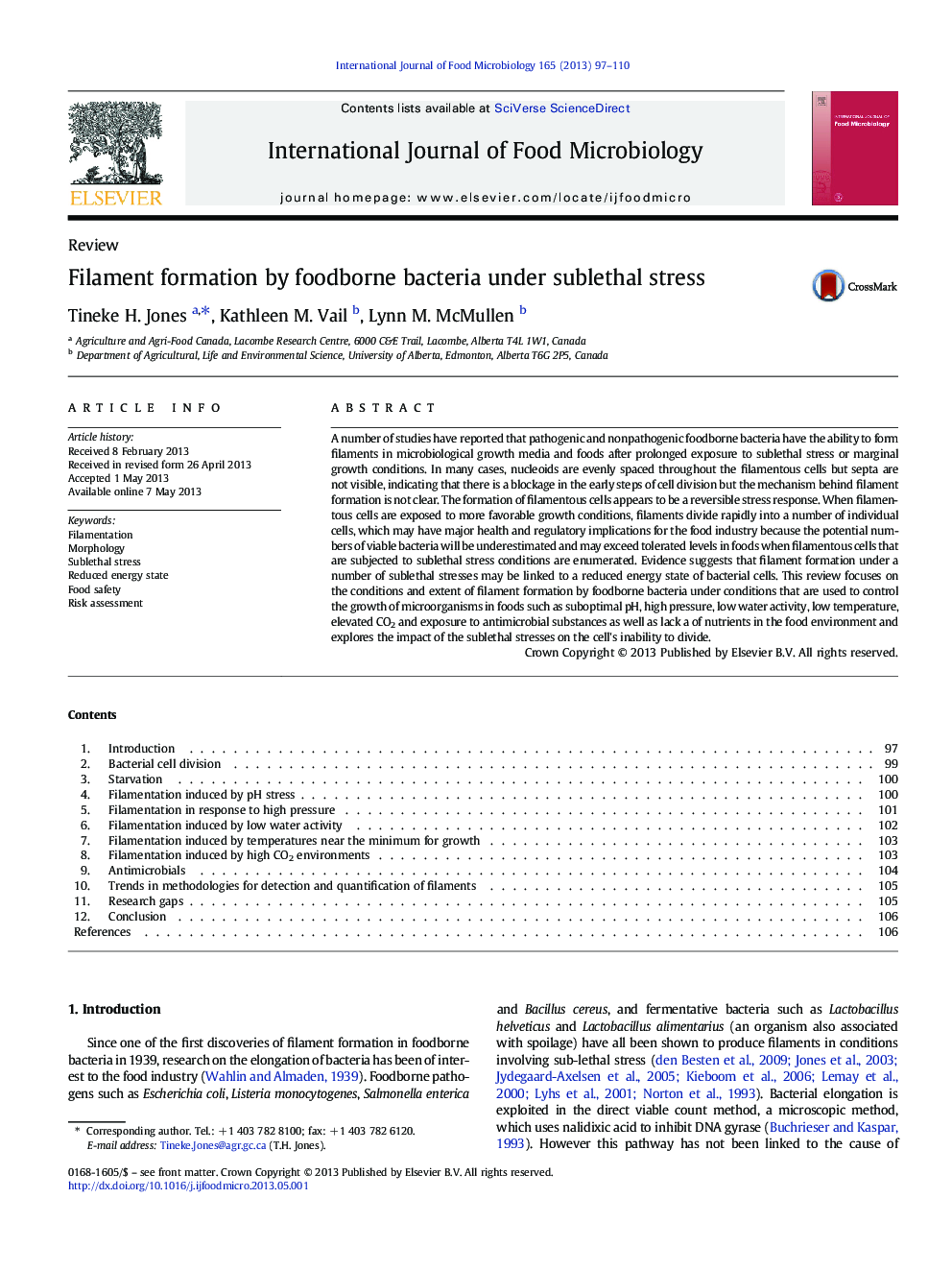| Article ID | Journal | Published Year | Pages | File Type |
|---|---|---|---|---|
| 4367092 | International Journal of Food Microbiology | 2013 | 14 Pages |
•Bacteria can form filamentous cells under sublethal stress conditions.•The specific mechanism leading to filament formation may well be different for the different stresses imposed on the cell.•Filamentation may be a result of decreased levels of energy.•Filamentation may lead to an underestimation of health risks.
A number of studies have reported that pathogenic and nonpathogenic foodborne bacteria have the ability to form filaments in microbiological growth media and foods after prolonged exposure to sublethal stress or marginal growth conditions. In many cases, nucleoids are evenly spaced throughout the filamentous cells but septa are not visible, indicating that there is a blockage in the early steps of cell division but the mechanism behind filament formation is not clear. The formation of filamentous cells appears to be a reversible stress response. When filamentous cells are exposed to more favorable growth conditions, filaments divide rapidly into a number of individual cells, which may have major health and regulatory implications for the food industry because the potential numbers of viable bacteria will be underestimated and may exceed tolerated levels in foods when filamentous cells that are subjected to sublethal stress conditions are enumerated. Evidence suggests that filament formation under a number of sublethal stresses may be linked to a reduced energy state of bacterial cells. This review focuses on the conditions and extent of filament formation by foodborne bacteria under conditions that are used to control the growth of microorganisms in foods such as suboptimal pH, high pressure, low water activity, low temperature, elevated CO2 and exposure to antimicrobial substances as well as lack a of nutrients in the food environment and explores the impact of the sublethal stresses on the cell's inability to divide.
